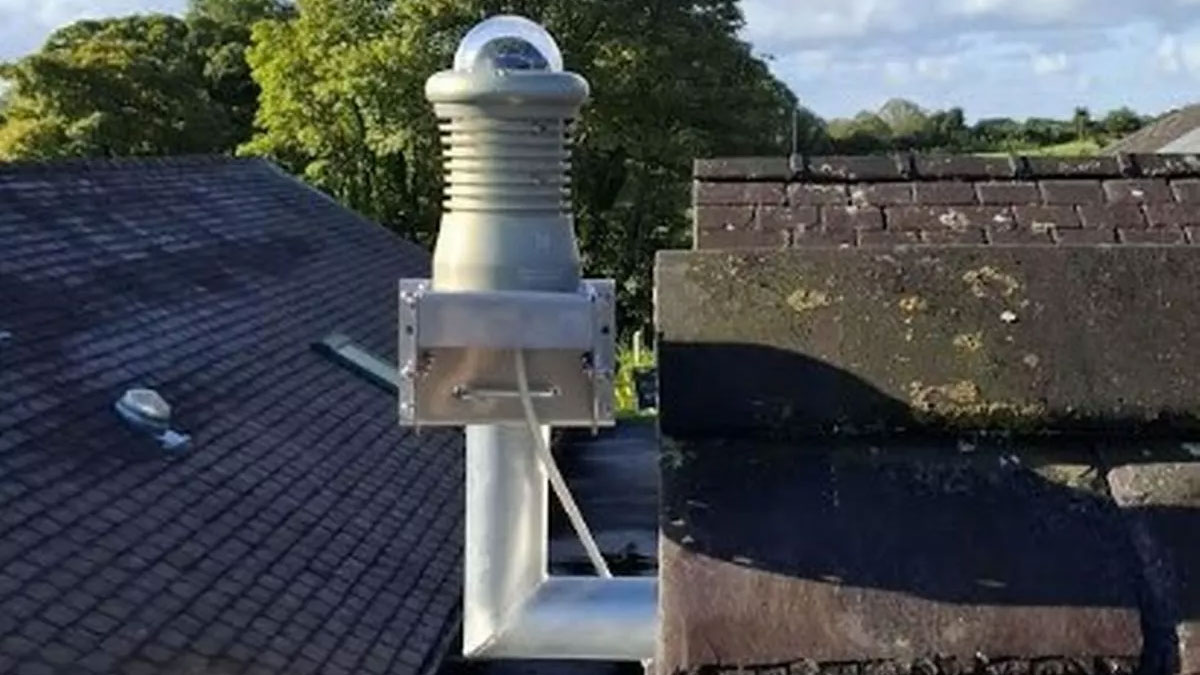
The council-run Oriel Môn museum and arts centre in Llangefn, Wales, normally provides insights into the island of Anglesey’s culture and history, including significant Iron Age artifacts.
Now, however, it’s turning its attention to studying objects, billions of years old, travelling across the night sky.
Using special high-tech camera equipment, the museum is now gathering information about meteorites, space rocks which fall to the Earth’s surface. Meteors, also known as shooting stars, occur when meteoroids – chunks of ice or rock in space ranging from a grain of sand to a boulder – enter the Earth’s atmosphere at high speeds and burn up with a streaking flash of light.
Meteorites are pieces of meteors that don’t burn up and hit the ground.
Within days of the camera being fitted to the roof of the museum, it recorded a hit on 26 November 2024. The camera is helping to provide information for research as part of SCAMP – the System for Capture of Asteroid and Meteorite Paths – the UK branch of an international network known by the rather cool name of the Fireball Recovery and Inter-Planetary Observation Network (FRIPON).
SCAMP cameras were originally installed at sites in Honiton and London, and are also in Cardiff and Aberystwyth as well as other locations across the UK, hosted by research institutions, local astronomy societies and citizen-scientists.
The most detailed information on the processes, conditions, timescales, and chronology of the early history of the solar system, including the nature and evolution of the particles in the pre-planetary solar nebula, has so far come from the study of all these extra terrestrial materials. “Recovering intact samples of such materials is therefore a critical goal of planetary studies,” says FRIPON.
100 tons of extra terrestrial material collide with Earth every day, according to FRIPON, mostly as small as 0.2mm. It adds that meteorites with masses greater than 100g, less than one in 500 are recovered, adding that, bizarrely, recovery rates of meteorites were much higher in the 19th century than in the 20th, “showing that there is at present a large potential for improvement.
“The most efficient approach for recovering freshly fallen meteorites is to witness their bright atmospheric entry via dense (60-120 km spacing) camera and radio networks. These networks make it possible to accurately calculate their trajectory from which both their pre-atmospheric orbit and their fall location (with an accuracy on the order of a few hundred meters) can be constrained.”
"These rocks, the first meteorites recovered in the UK for 30 years, hold vital clues about the origin of the solar system and formation of planets." Kelly Parry, the senior manager of the archives, museum and gallery at Oriel Môn said: "The Llangefni camera had only been installed on November 21, 2024. So, we were very pleased to hear that our camera had captured its first meteorite image just a few days later, on November 26. "There was also a nice capture of a single image view on December 8. We are also very pleased that the camera in Llangefni is now helping to fill a gap in the current network of cameras.”
By the end of 2025, additional SCAMP cameras will provide nearly full coverage of the UK.
Feel like doing your own stargazing? Why not take a look at our guides to the best cameras for astrophotography, the best telescopes for astrophotography, and the best lenses for astrophotography.







